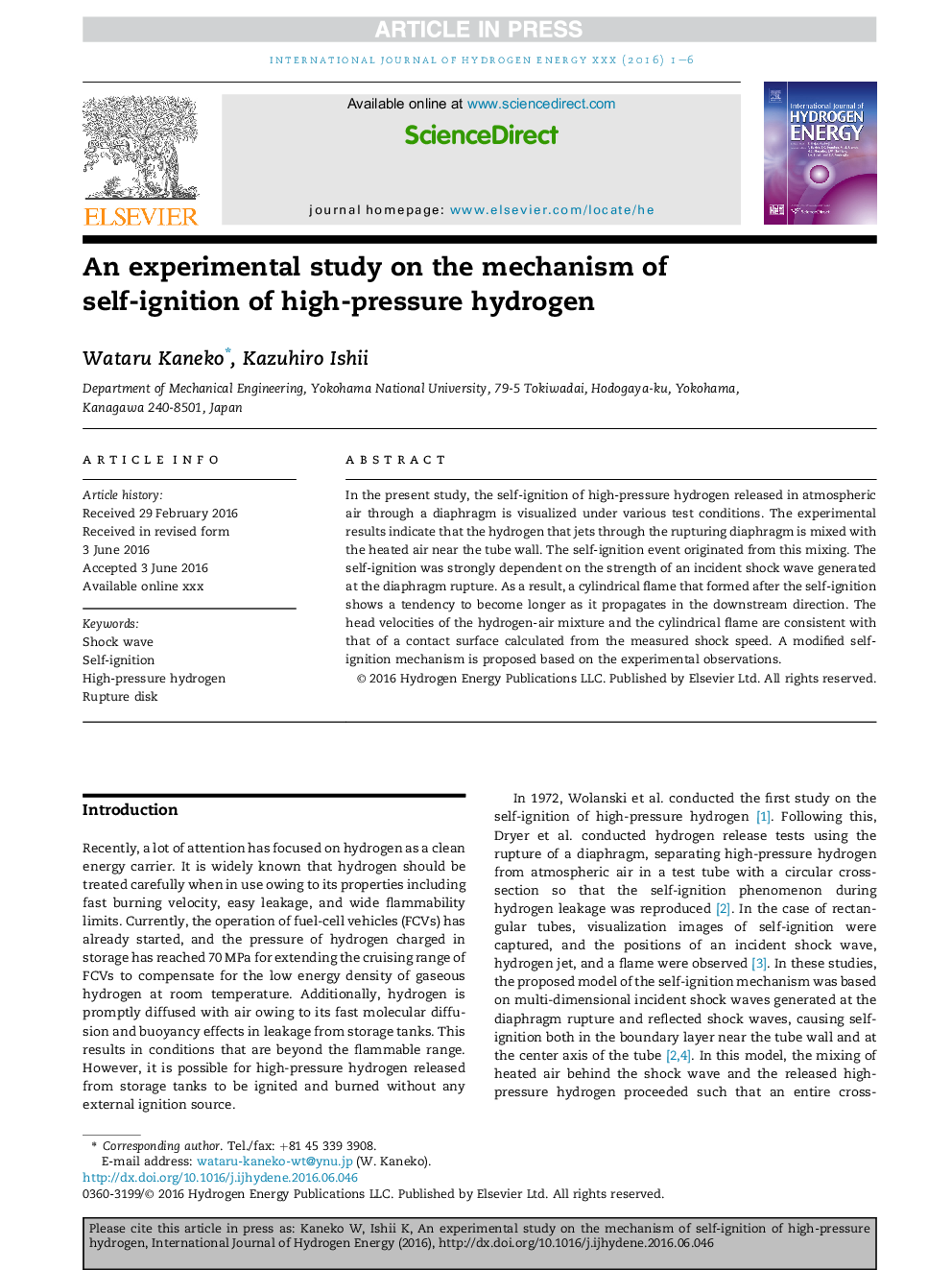| Article ID | Journal | Published Year | Pages | File Type |
|---|---|---|---|---|
| 5145349 | International Journal of Hydrogen Energy | 2017 | 6 Pages |
Abstract
In the present study, the self-ignition of high-pressure hydrogen released in atmospheric air through a diaphragm is visualized under various test conditions. The experimental results indicate that the hydrogen that jets through the rupturing diaphragm is mixed with the heated air near the tube wall. The self-ignition event originated from this mixing. The self-ignition was strongly dependent on the strength of an incident shock wave generated at the diaphragm rupture. As a result, a cylindrical flame that formed after the self-ignition shows a tendency to become longer as it propagates in the downstream direction. The head velocities of the hydrogen-air mixture and the cylindrical flame are consistent with that of a contact surface calculated from the measured shock speed. A modified self-ignition mechanism is proposed based on the experimental observations.
Related Topics
Physical Sciences and Engineering
Chemistry
Electrochemistry
Authors
Wataru Kaneko, Kazuhiro Ishii,
